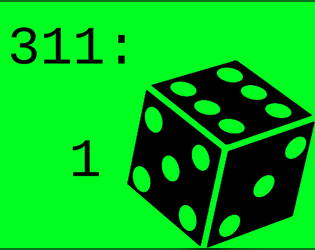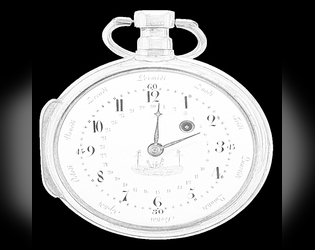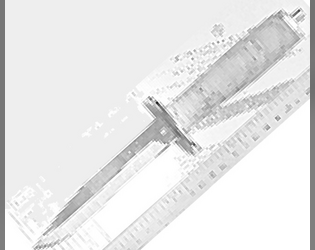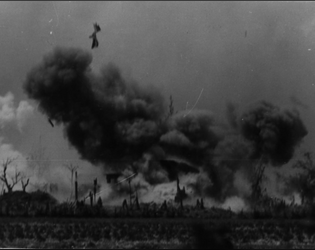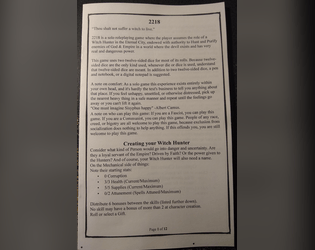Print run when?
ayleczander
Creator of
Recent community posts
Key to this is the Arc Driver story framework, and this is a decently powerful tool to add framework to a narrative solo session.
The included oracle is very slim. I understand that the intent is to not take up much space but the author's trimmed a bit too much off the source inspirations.
Practically speaking this doesn't much matter because the oracle is trivially switched out for something else, and the real meat of this is the story framework or Arc Driver, which has some real legs.
The word tables seem to strike a good balance between generic and still providing some shape as far as I can tell, but I don't use that kind of tool myself, so I'm not the best judge.
If I had a request for future revisions, it would be a more defined layout and structure, and possibly some examples of use.
Don't sell your feedback (or yourself) too short. It's clear once it's explicitly laid out, but in the original wording you had issues, and I can confirm other people I've had read the rules have similar complaints. Part of the issue is I have multiple 'things' per sentence, going to bullet point it out and then re-condense to see if I can make things clearer.
Expansion on the wizard thing:
It might be less than obvious in the current version of the rules, but the idea is that the wizard gets one attempt to activate the orbital weapon. If they roll over their Elan, it doesn't go off, and they can't do it again, so you actually do want them to have a relatively high Elan anyhow.
Oh yeah, 6mm skirmish is actually my preferred scale. I'm impressed that you could derive that from this rule-set.
To be honest this is meant to be fairly 'tinkertoy'/setting/miniature agnostic, so the exclusion of theming is a conscious choice, not just trying to save space. There are no units, one to save on space, but also to force players to make their own. I want people to be able to use literally any minis. If I had to pick a setting, think of a sci-fi version of the wars in Zaire/The Democratic Republic of the Congo. Unfortunately that's quite a bit dark 'fantasy' (Note that the wizard is invoking orbital weapons). I feel like given the limited space the rules are working with I do a fairly okay job of creating an (optional) implied setting if that's desired. That said you're not the first to raise that point, so if I do more work with this, I suppose I should add more on that front. And yeah I'm familiar with sludge, but haven't gotten around to buying the ruleset. Not convinced it's better than Turnip28 anyhow.
I seem to have explained the whole activation process a bit poorly, as what you're describing is actually fairly close to the intended function.
"Each Unit may take a single action when activated, and after taking an action may Roll against their own Elan for an additional action, so long as their Elan is above 1."
The intended meaning is that each unit gets a 'free' action once activated. After acting, a unit may roll for an additional action, and they can do this so long as they have an Elan higher than 1 (Since making that roll would kill the unit).
Roll less than or equal to the Unit's Elan to take an additional action. If you Roll higher than the Unit's Elan, their activation ends. Either way, after rolling reduce the Unit’s Elan by 1.
Taken together, this is intended to make the decision to 'push' for additional actions an actual decision, with the additional action not a sinecure, but something that you might not get, while the cost is always going to come up. At the same time, because the first action a unit gets on their Activation doesn't require a roll, it does not deplete their Elan.
A Unit's activation may be voluntarily ended by their player at any time. Elan goes up by 1 up to the Unit’s starting value at the end of a Unit's activation.
This is meant to make it clear that rolling for additional actions is not required, and allows a Unit to 'regenerate' Elan, by only taking the 'free' action that does not require a roll. This removes the need for a 'rest' action, and allows for Elan to regenerate passively throughout the game. Do note that any attacks against a unit it survives will also reduce Elan, so Unit effectiveness should continually degrade, forcing a relatively quick resolution of the game.
If you have suggestions for how the above can be made clearer and more effectively communicated, I'd welcome them, as clearly I've already failed on that front once.
The restriction on the Wizard power being a one shot is so I can borrow existing mechanics, which A) The whole purity of design/design by subtraction thing, and B) Let's me save space. In an expanded game, there's clearly a ton that can be done with powers like this I agree.
Side note: We're both wrong, technically it's "élan", not elam or elan. Broadly it's a stolen french word meaning eagerness to charge to the sound of the guns, seen often in discussion of Napoleonic armies.
Basically they explode once, it's actually the first sentence of the actual rules: 1d6 system. On a roll of 6, roll the die a second time and add it to the total.
However the most recent version of the game (waiting for reviewing to end) does change the language on Energetic to not use the term exploding, and better resemble other rule descriptions.
Pretty sure this is in error, but if a destroyer sinks, the drone ships are fine since it specifies 'frigate' in the description. Also it amuses me that your answer to games taking up too much space is to require a 6' square.
You did do a very good job reducing the game to the bare essentials however.
Not a huge fan. This entry doesn't use the template, and there are a couple of obvious mechanics that could be subtracted to better fit the theme.
For example literally every mechanic could be removed and the entire thing be replaced with 'being alone is scary/sad'.
This is preachy and lacks any insight.
I've actually seen a couple of games with broadly similar notions and mechanics, but none with the added wrinkle and chaos of surviving a storm, so that's fun. I'm inclined to think that there's a bit to much damage off collisions, and in my own games I'm likely to house rule that as doing only 1 hull damage each.
A decent game that gets bonus points because I like the author's work.
'Ciber'war is a word crime, and no part of this is a roguelike, the bots even respawn.
All that said, the combination of program and blueprint is quite clever, and allows for some very compelling strategies. The overall gameplay once the bots are designed is also quite simple accounting for the attack rules in another comment.
-Can't PK Meraxis Prime, 2/10.
Seriously though this is an impressive bit of work. I didn't believe you could get that full of a 4x on a page. Fits the theme pretty well too. For example I don't think you could meaningfully reduce the number of units without sacrificing depth, but it would have been easy to add extra units that don't really add anything given the existing depth.
In the English I'm familiar with, it's fistful (one 'l'), and man that's distracting.
I like what you were going for with the dodge chance being tied to movement. I'm not sure that the additional complexity added by the dodge tokens is justified by how they enhance the game, and it could be a good place to adhere to the theme and subtract mechanics for version 2.
Driver traits probably assist the driver rather than assit them. Also I'm unconvinced there's any reason to ever take one of the slower frames given that this is a race, and it's just a huge advantage. 2" is almost adding an entire die every time they roll. This is also why the last place gate advantage isn't big enough. Also have to agree with Baarfa re: theme fitting.
Oh and why specify vehicle scale as 32mm instead of like "hotwheels'
Working on a different jam right now, so my submission's going to take a hot minute. I'm going to post above mod so it can freely be borrowed.
Roll 1d6 when attempting something difficult:
Roll < Stress: Success with minor consequences, generally +1 Stress. May roll an additional 1d6, and add to Roll.
Roll == Stress: Success with minor consequences, +1 Stress.
Stress < Roll < 7: Unmitigated Success.
7 <= Roll: Failure, major consequences, possibly even death.
When stress == 7, reset stress to 2, suffer major consequence.
If you have an applicable trait or bit of kit, you may roll two dice, and take whichever you prefer, *before* rolling additional dice if Roll < Stress.
Couple of questions about the leveling twist chart.
1: Do the bonuses for level only apply when determining which chart you roll on, or do they also apply to the subchart? If it's the former, Apex Predator becomes actually impossible to roll after level 90. Same question for the +Tier when power leveling.
2: Single skill unlock should probably say 'Raise a skill you used in your last battle by one', since technically you can level up outside of a battle.
3: For new skill unlock, if you roll your starting subtype is it +1 to all skills you currently have, or +1 to all skills given to your subtype.
4: Is Improved Skill Unlock on the Master chart meant to be Improved Skill boost, or does it let you increase a skill you don't have yet?
As Cookie Monster says: "Zombies kinda 2007" (Yes really. Look up the teaser trailer for Once Upon a Monster). Disregarding what is basically just an artifact of personal taste, this is a fairly slick little system covering people in a stressful situation, which I believe is original, or at least I've not seen anything like it before.
I'm personally not a huge fan of using playing cards, and some of the layout and usage is less than clear, as is the core gameplay loop. I've just done a read-through, so it may be clearer in play. An example would probably help.


